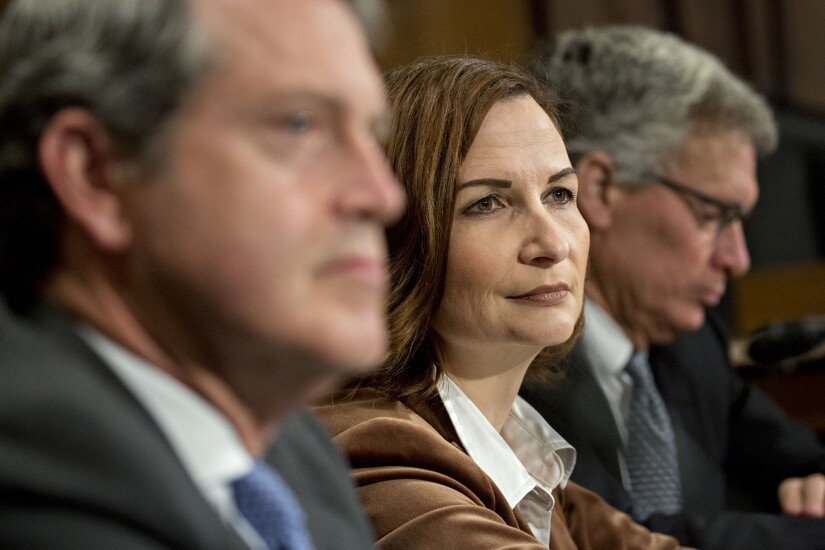WASHINGTON — It has been more than four months since President Trump signed a bill into law that gave certain banks relief from Dodd-Frank Act regulatory burdens, and they are waiting for regulators to implement the changes.
The Federal Reserve Board is developing a proposal, mandated by the law, that revises the central bank’s scheme for supervising large banks. Specifically, the central bank must figure out which enhanced supervisory standards to apply to banks with assets of $100 billion to $250 billion.
But at a Senate Banking Committee hearing this past week with key principals from the regulatory agencies, it was clear that the agencies’ workload is only partly tied to the reg relief law.
Fed Vice Chairman of Supervision Randal Quarles, Federal Deposit Insurance Corp. Chairman Jelena McWilliams, Comptroller of the Currency Joseph Otting and National Credit Union Administration Chairman J. Mark McWatters also discussed their progress in updating capital requirements, modernizing how they enforce the Community Reinvestment Act and continuing to deal with the continuing enforcement issues at Wells Fargo.
Here are some of the key items on regulators’ to-do list:










